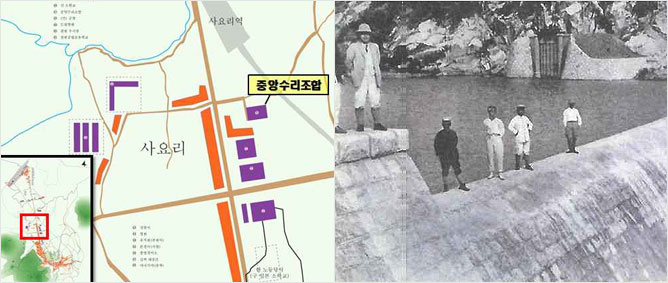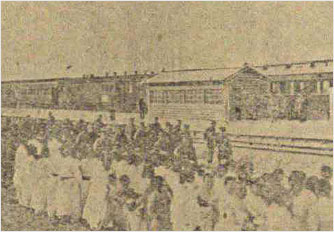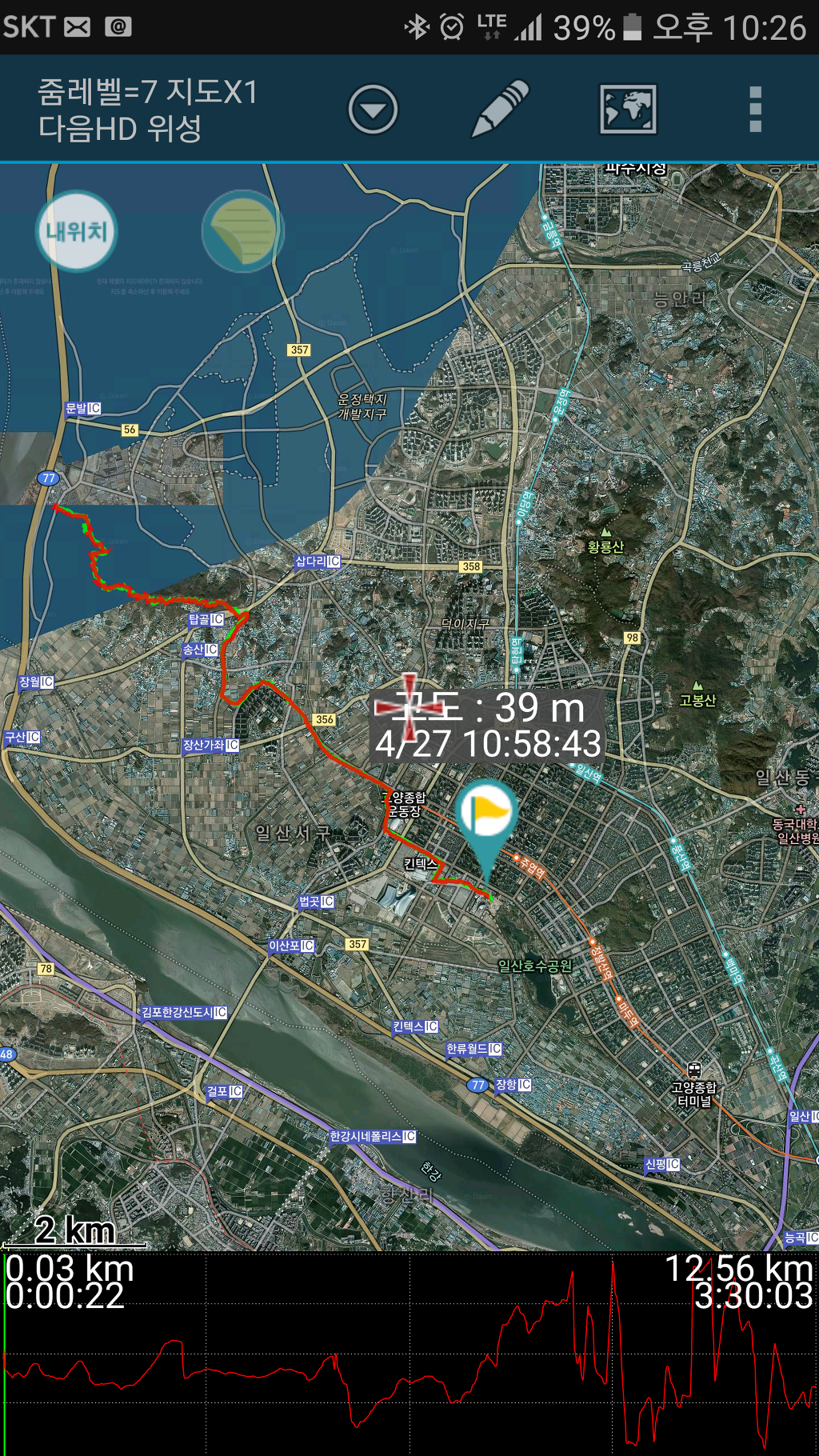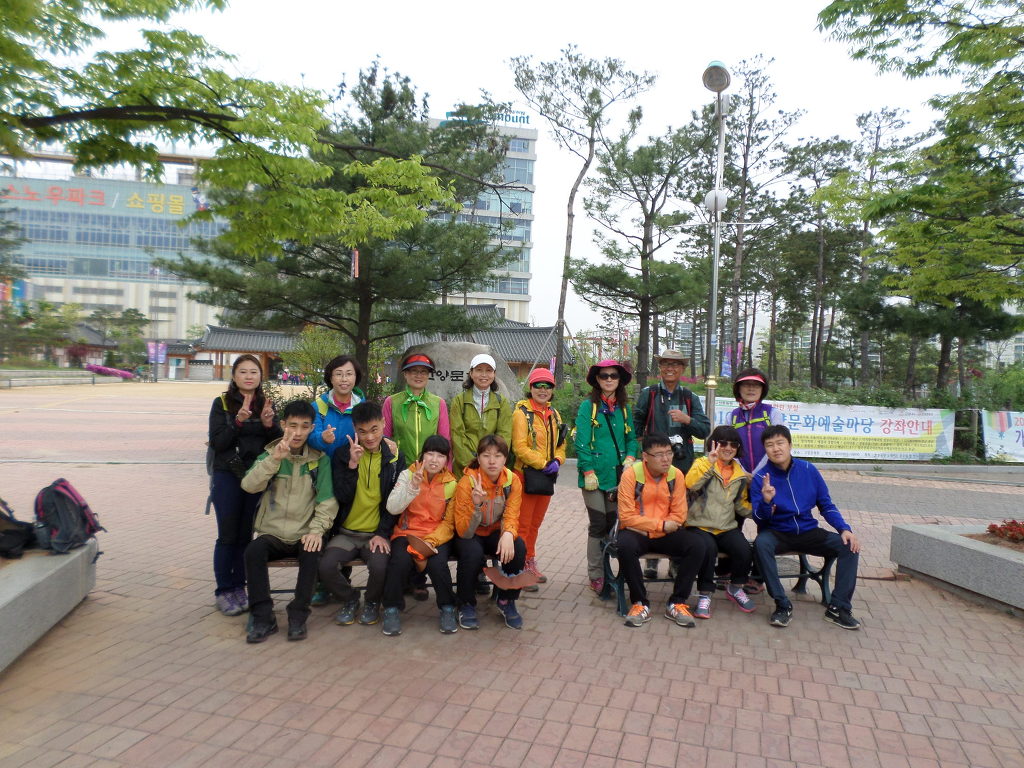Villages within DMZ that Have Disappeared
The villages have disappeared, yet their traces and memories are distinctive.
消失的DMZ內村庄消失的村庄,痕迹与记忆却很清晰。
Our village used to be vibrant because we ran schools, markets, and theatres. All of a sudden, one day, the bustling village was gone. Our friends in our neighborhoods, the busy markets, and the theatres overflowing with viewers all disappeared. The war not only halved the land but also devastated our village.
我们的村庄有学校与市场、剧场,到处都是人。但是某一天,我们的车水马龙的村庄消失了。邻家的朋友,喧闹的市场,人山人海的剧场,这一切都消失了。战争将我们的土地分成两半的同时,也让我们的村庄也变得如此。

Who Made the Bustling Village a Lonely Village?
喧闹的村庄因何变成安静的农村村庄
Cherwon had prospered considerably, using its lava plateau, at least before the Korean War broke out. Cherwon, the traffic hub that connected South and North Korea at the middle point of the Korean Peninsula, even emulated the big cities in the 1930s, such as Chuncheon, Wonju, and Gangneung.
将铁原熔岩地带作为原动力,在6.25战争之前为止,形成相当繁盛的城市的铁原,曾经是在韩半岛的腰板连接南北的交通要地,1930年当时其城市规模可以跟春川、元州、江陵比肩。
When Korea came under the Japanese colonial rule, however, Cherwon prospered yet suffered from exploitation and deprivation by the Imperial Japanese, carving a sad story in its history. After Korea’s liberation on August 15, 1945, the country was divided into South and North at the 38th parallel north, and Cherwon suffered the most. Cherwon fell under the reign of communism, and when the Korean War broke out in 1950, the South and North troops staged a fierce battle to take Cherwon, the largest crop cultivation area in Gangwon-do then. In the process, the prospering Cherwon was completely devastated.
但是随着日本抢占韩半岛,铁原繁荣的同时,还要遭受掠夺与剥削,成为具有痛苦历史的地区。1945年8月15日光复之后,韩半岛以北纬38°线为准分断为南韩与北韩,铁原比其他任何地方更深地遭受到痛苦。北韩陷入共产治下,1950年爆发6.25战争之后,南北为了争夺江原道最大的米之乡展开了激烈的战斗,从而繁盛的铁原变成一片废墟。
Traces of prosperity can still be seen today in several ravaged buildings in the civilian control zone and in some villages south of the zone. They are now early-modern cultural heritages attesting to the characteristics of the restored city that suffered from deprivation and exploitation in the hands of the colonial Japanese, and that later came to be controlled by both South and North Korea, being located in line with the 38th parallel north and in the DMZ part where Cherwon is situated.
通过民统线内部及其以南地区遗留为废墟的几个建筑物,可以观察过去曾经繁盛的城市痕迹。这样的建筑物经过日帝强占期的掠夺之后,因为北纬38°线与现在的DMZ,现在成为反映北韩与南韩统治的收复地区特殊性的重要的近代文化遗产。

The war not only divided the land, leaving the Korean people in pain, but also devastated the once bustling city. Cherwon currently (2015) has a population of 47,537, down 40% compared to 80,479 during the Japanese colonial rule. The population has now doubled from the registered population of 21,335 right after the Korean War. Also, Cherwon-eup in Cherwon-gun had a population of 15,458 in the 1930s, when it prospered, but the population has now been reduced by a hefty one-third, to 5,412.
各年度金化郡、金化邑、铁原郡、铁原邑的居住住民人数比较 战争将一片土地分断为两半,给我们的民族带来了痛苦,而曾经喧闹的城市也变成现在的情景。铁原以2015年为准,人口总数为47,537名,比日帝强占期的80,479名,大约减少40%,而与6.25战争之后(21,335名)相比,增加了两倍以上。而且,铁原郡内的铁原邑人口数,在繁盛的1930年代为15,458名,但现在大约减少1/3,仅为5,412名,据调查其数大幅减少。
Reversing Time to Look for the Vanished Villages
逆转时针,寻找被消失的村庄的时光
The village with the largest number of households within the DMZ at present is Geumgok-ri in Geunbuk-myeon, Cherwon-gun, but a long time ago, there were several villages with a population no less than that of Geumgok-ri. In the past, in the old town area of Cherwon-eup, there used to be villages, such as Oechon-ri, Sayo-ri, Gwanjeon-ri, Jung-ri, and Wolha-ri. In the old town area of Gimhwa-eup, there used to be Eupnae-ri and Saengchang-ri.
现在,在DMZ内村庄具有最多房屋数的村庄是江原道铁原郡近北面金谷里。但是很久以前,不是像近北面金谷里,生活着那么多人的村庄,甚至更多人的第2、3的金谷里村庄。在过去的铁原邑旧市区有过外村里、四要里、官田里、中里、月下里,而金化邑旧市区有过邑内里、生昌里。
The war, however, made such bustling villages disappear, and now, we have made an effort to look for the once bustling villages in Cherwon. We thus gathered all the news articles and historical materials about Cherwon and Gimhwa covering the times from the Joseon period to the pre-Korean-War, including the period 1910-1953 and the Japanese colonial period. Alongside our onsite surveys, we also searched the literature for information about the town area of Cherwon and Eupnae-ri in Gimhwa-eup to survey their natural, geographical, historical, and humanities environments. We interviewed the residents to gather from them the major incidents and stories that they remembered so that we could gather the basic data about the villages’ lifestyles, population, and economy, including the village history and legends.
但是,战争使这些喧闹的村庄消失,而时光流逝的现在,我们想要找回当时人们喧闹的铁原的村庄。为此,包括朝鲜时代到6.25战争之前的日帝强占期的1910年~1953年为止,收集铁原与金化相关全部新闻报道与史料,并进行了寻找铁原邑市区与金化邑邑内里地区的自然、地理环境、历史环境、人文环境的文献调查与现场访问。而且,通过听取村庄住民记忆里的主要事件、住民的典故等住民面谈,进行了包括村庄的历史与传说的生活像、人口、经济相关基础资料收集。
Based on the gathered data, we came up with diverse stories on the vanished villages, alongside interpretation data. We arranged the stories by theme — Cheorwon Plains, train station areas, culture and arts, etc. — reviving our memories on the villages, which are fast being forgotten due to the historical pain.
以此为基础,消失的村庄为素材制作了各种故事,并具备了解说资料。以铁原平野、驿站周围故事、文化艺术故事等各主题分类故事,记忆在历史的痛苦中被遗忘或消失的村庄。
Such village restoration project was limited, however, when the humanities science approach alone was adopted. To achieve true restoration, we had to restore not only the forgotten times but also the spaces; thus, to precisely restore the villages, we focused on the buildings. On the restoration map, we can look at the virtually restored villages to remember their once bustling looks.
但是,就这样开始的村庄复原事业光通过人文学的靠近是有些限制。复原这一用词不仅仅是存在着文字,而是包括空间的视觉概念,所以还需要建筑物为主的精密复原的制作。我们通过复原图,看到虚拟实现的村庄,重新复原当时喧闹的村庄面貌。

Source: Left – The Gangwondomin Ilbo newspaper (June 24, 2008); right – provided by Kim Song-il in Cherwon / a group photo from Cherwon Public Primary School (left, 1935) and school view (right, 1938)
资料来源:左-江原道民日报(2008.06.24.)、右-铁原的金松日提供/铁原公立普通学校团体照(1935年,左)与校舍全景(1938年,右)
The Village People Also Had a Life Story
该村庄也有过人们生活的故事
It is the same anywhere where people live. The village also used to be the same.
The village was vibrant with incidents, accidents, and culture and arts activities. The storytelling about the DMZ villages that have vanished consists of stories about Cheorwon Plains as well as the railroad, markets, schools, culture and arts and sports figures, and granite. The village was strange and was totally different from what it is today. Here are several stories from the village’s past.
任何地方,人们生活的故事都相同。那个地方曾经也是这样。 充满事件、事故与文化、艺术故事的村庄。消失的DMZ村庄的故事由铁原平野故事、铁道故事、市场故事、学校故事、文化.艺术.体育.人物故事、花岗故事组成。因为与现在相差甚远,以致令人惊讶而陌生的面貌...。接下来介绍当时在那里的几个故事。
The Story Behind the Now Rich Cherwon Plains
直至形成现在的黄金田野的铁原平野
Cherwon Plains, consisting of a basalt lava plateau, was originally infertile. When an irrigation association was launched in 1922, the infertile land began to turn into what Cherwon is today, a land yielding abundant crops.
玄武岩熔岩形成的铁原平野本来是不容易生长稻米的贫瘠的地区。现在以每年秋天的黄金田野而享誉的铁原,可以说是从1922年水利组合的创立开始。
Irrigation was crucial for the cultivation area in the village, whose people engaged mainly in farming. The agricultural water gathered in the dams resolved droughts and provided drinking water to the residents, but the collapse of the embankments brought about massive death and destruction.
在农业为主的情况下,给自己的耕地供水是非常重要的事情,而这些农耕水可以解决干旱与旱灾引起的渴望,但同时有可能发生堤坝崩溃等风险。

Source: 60-Year History of Cherwon-gun’s Administration / Construction of Bongraeho Reservoir (1923)
资料来源:铁原郡地方行政60年史/蓬莱湖水库竣工(1923年)
In 1926, Jungang Irrigation Association, which was situated in Buk-myeon, Cherwon, had difficulty buying lands and experienced problems surrounding the design of construction works. Eventually, part of the dam embankments collapsed, causing damage to the houses and crops in the Hoesan area worth 8,000 won. As 30 won then is now equivalent to 240,000 won, the damages then were worth a hefty 64 million won at present. For three months in the summer of 1936, Cherwon suffered severe droughts. In the process, the rice paddies that had not been placed under the control of Jungang Irrigation Association all dried up, but the fields and rice paddies that had been placed under the control of the association luckily completed the planting of rice seedlings, thus boosting the importance of the association.
1926年,位于江原道铁原北侧的中央水利组合在土地购买与工事设计上具有一些问题,结果一部分堤坝崩溃,导致淮山一带的房屋与农作物受到损失达到8千韩元。当时的30韩元相当于现在的24万韩元,所以损失金额大约是6400万韩元。1936年夏天,长达三个月的铁源地区大旱灾,水利组合区域外的天水畓水干,但水利组合内的农田有幸完成插秧工作,充分做好了水利组合的价值。
Cherwon Train Station, Which Saw A Lot of Cargoes Being Loaded and Unloaded
运输大量货物的铁原站火车
At 7:30 a.m. on October 22, 1912, the Japanese governor-general of Korea boarded a train at Namdemun Station to attend the opening ceremony of Gyeongwon Railroad Line. The railroad line, extending from Yongsan Station to Wonsan Station (covering 35 stations), signaled the future growth and prosperity of Cherwon.
1912年10月22日,朝鲜总督府的总督在上午7点30分钟在南大门站坐上火车。乘坐这趟火车出差的理由是参加京元线铁道开通仪式。此后,龙山站到元山站的京元线铁道(35站)建设,成为预告铁原的发展的信号弹。

Source: The Maeilsinbo (October 24, 1912) / Cherwon Station opening ceremony with participants and tourists
资料来源:每日新报(1912.10.24)/铁原站开通仪式参加人与游客
In particular, Cherwon Station covered a spacious area of 50,000 pyeong (165,000 square meters) and employed over 80 staffers. According to the Cherwon-gun records published in 1937, 263,047 passengers (embarking and disembarking) and 39,444 baggage pieces weighing 53,188 tons were conveyed by Gyeongwon Railroad Line. It took 4 hours then to travel to Naegeumgang Station, covering a distance of 116.6 km.
特别是,铁原驿站总面积为5万坪,雇用80名员工,而1937年发行的铁原郡志记录着乘坐京元线的人员(乘车与下车)达到263,047名,货物为39,444件共53,188吨,到内金刚站为止116.6km,需要4个小时。
As Japan struggled to secure resources amid the Pacific War, however, only part of the railroad was operated, and after the Korean War, the station was closed alongside the stoppage of Gyeongwon Line.
但是,太平洋战争中为了确保资源,只运行一部分地区,而6.25战争以后,与京元线一起全面停止运行。
Gimhwa-eup, Once a Traffic Hub Overflowing with People
交通中心,人们车水马龙的金化邑
We cannot say that all roads lead not to Rome but to Gimhwa, but Gimhwa-eup had class 1 and 2 roads going through it, connecting it to Geumseong to the east, Cherwon to the west, Pyeonggang to the north, and Hwacheon to the south. It was a major traffic hub of Gangwon-do.
虽然无法说‘不是每条路通往罗马,而是通往金化’,但金化邑是贯通1、2等道路,与东面的金城、西面的铁原、北面的平康、南面的华川相连的江原道交通要地。
Gimhwa was connected to Gangwon-do’s capital city of Chuncheon via National Road No. 5. The people in Seoul traveled to Chuncheon by taking Gyeongwon Railroad Line (locomotives), Geumgangsan Electric Railroad (electric railroad), and National Road No. 5 (cars).

Source: The Maeilsinbo (October 24, 1912) / Cherwon Station opening ceremony with participants and tourists
资料来源:每日新报(1912.10.24)/铁原站开通仪式参加人与游客
通过5号国道,与江原的首府城市春川连接,所以首尔的人们想要去春川,就利用京元线(蒸汽火车)-金刚山电动铁道(电动铁道)-5号国道(汽车)移动。
At that time, a newspaper reporter writing newspaper articles on traveling in Cherwon, Gimhwa, Hwacheon, and Chuncheon said that the readers’ response to his articles was hot.
当时,有位记者按照这个路径,在新闻投稿铁原-金化-华川-春川旅游的旅行记,而当时读者的关注度很高。
In addition, Geumgangsan Electric Railroad, which was opened in 1924, carried not only passengers but also cargoes. At that time, Gimhwa mined special minerals such as iron sulfides, barites, and manganese, and their output size ranked first or second in the country. Soybeans, wheat, and forestry by-products topped the outputs of Gangwon-do. Gimhwa-eup prospered beyond imagination.
而且,1924年开通的金刚山电动火车不仅是旅客运输,还成为货物运输的重要运输手段。当时在金化挖掘的硫化铁、重晶石、锰等特殊矿物产量达到当时全国第1、2位。大豆与小麦、林业副产品的产量也在江原道属于前茅,由此可知金化邑的繁华超出我们的想象。
Cherwon Economy’s Driving Engine, the Relocation of the Cow Market
铁原经济的大作用,牛市场迁址
In December 1931, a civil gathering was held. The participants probably discussed an important issue that drew the attention of many people: the cow market, which was part of Cheorwon’s economic growth engine.
1931年12月,正在举办一个市民大会。好像在讨论着很多人关注的一件事件。正是关于承担着铁原经济的一个支柱的牛市场相关内容。
At that time, the cow market was located at 135 Sayo-ri (200 m northeast of Bukgwanjeong). In around 1930, the people insisted that the market be relocated to a place near Sayo-ri Station. The pros and cons of such move were hotly discussed by the citizens, but the civilian-committee-led gatherings were eventually dispersed by the Cherwon Police. On November 21, 1931, the Eup Council approved the proposal that the market be relocated to 327 Sayo-ri. Thus, the market was finally relocated near the Primary School, as suggested by the residents.

Source: The Dongailbo (December 27, 1931) / Civilian gathering’s declaration statement opposing the relocation of the cow market in Cherwon
资料来源:东亚日报(1931.12.27.)/反对铁原牛市场的市民大会决议文
起初,牛市场位于四要里135番地(北宽亭的东北方向大约200m),但1930年前后主张迁址到交通与城市计划的中心地带-四要里站附近,所以通过市民大会,赞成方与反对方展开了激烈的讨论,最终因铁原警察署的解散命令,以委员会为中心进行的市民大会被解散,并于1931月11月21日根据邑议会的决定,通过了迁址到四要里327番地的案件,由此牛市场的位置确定为当时热议的普通学校附近。
Villages that Fostered Excellent Cultural, Art, and Sports Figures
培育出文化人、艺术人、体育人的村庄
Cherwon was a place of culture, arts, and sports activities and was the last venue of the northern region’s performing arts tour.
铁原作为文化、艺术、体育的场所,同时是北部地方巡演的最后演出场所。
Taking center stage in that performance was Cherwon Theatre. Cherwon Theatre symbolized the setting and rising star, signaling the ending and the start, respectively, allowing all the performing artists to perform at least once.
该演出的中心有铁原剧场。尤其是,铁原剧场被认为是最后装饰的‘陨落之星’与被称为最初的‘新生之星’的场所,同时也被认为是文化艺术界任何人都想站在舞台演出的场所。

Source: The Dongailbo (July 5, 1934) / Gyeongseong Ewha Women’s Junior College’s Musical Company performing at Cheorwon Theatre
资料来源:东亚日报(1934.7.5.)/京城梨花女专巡回音乐团的铁原剧场演出
On December 24, 1940, an obituary on Cha Hong-nyeo, the top actress then, known as “the Joseon people’s lover,” was issued, saddening many people. She lived a short yet fierce life of 22 years, and her last performance was at Cherwon Theatre.
1940年12月24日,被称为朝鲜的恋人的顶级人气演员车红女去世。在22岁的短暂而轰轰烈烈的生涯中,她的最后的演出场所就是铁原剧场,而这个事实更令人感到惋惜。
At her last stage, Cherwon Theatre, Cha Hong-nyeo became the eternal setting star, and we remember her very well. Should the setting star vanish, the rising star should also emerge. On February 1, 1941, a nationwide music contest was held with great fanfare, and the winner was the famous singer Lee Eun-gwan. He later worked his way up, became famous for his Baebaengi Gut dance, and finally earned an arts master title for Seodosori Korean music.

Source: The Dongailbo (April 10, 1938) / A newspaper ad reads: “Cheated by love and shedding tears due to money”
资料来源:东亚日报(1938.4.10.)/‘红桃呀,不要哭’新闻广告
在成为最后舞台的铁原剧场,只能回忆成为‘陨落之星’的永远的‘红桃’,车红女。既然有陨落之星,那就会有新生之星。1941年2月1日,盛大举办了全国男女音乐竞赛大会,而这次大会的胜出者乘胜长驱,以裴冰儿谣成为著名的西道唱的艺能保有者。他就是名唱李殷官。
The Baebaengi Gut dance, which begins with a chant, like “I come here, I come,” presents the story of the death of Minister Choe’s daughter Baebaengi, and a male freak. The dance has been designated as Provincial Important Intangible Heritage No. 29. Lee Eun-gwan, a singer, graduated from a public primary school in Cherwon and later became a rising star.
“来了~我来了~”,崔政丞的女儿裴冰儿的死亡与一个流氓的故事为题材的裴冰儿谣,将此以西道唱重新确立,并以此获得重要无形文化财第29号的李殷官是出身铁原公立普通学校的铁原的'新生之星’。
Few would remember Korea’s first Olympics contestant. Only Son Gi-jeong from that time would be remembered as an Olympics champion, but before Son Gi-jeong, Hwang Eul-su, a boxing contestant, participated in the L. A. Olympics. He was an amateur Orient light-class champion, and afterwards, he became so popular among the residents that boxing matches were held in his hometown, Cherwon.
韩国最早的奥林匹克参赛选手,记着他的人们能有多少呢?也许,当时作为体育人被人记忆的选手是孙基祯。但是,孙基祯选手参赛之前,参加LA奥林匹克的第一位选手是铁原出身的黄乙秀拳击选手。他是东方业余轻量级冠军,后来在故乡铁原举办拳击大会,在故乡得到隆重的款待。
He did not win the Olympics contest, but he fiercely engaged in boxing, becoming the pride of the Joseon people then. Many other famous figures performed at Cherwon Theatre, but no traces of the theater remain today. Nonetheless, it was the rallying place for the Koreans at that time, and the place where they found solace amidst their pain and suffering.
虽然,在奥林匹克败阵甚是惋惜,但是带着民族之魂尽全力对阵,在当时成为朝鲜人最大的自豪。此外,很多著名人士访问的场所-铁原剧场,现在连痕迹都没有留下,但是通过各种方式成为解开我们民族之恨的场所。
Published in
December 30, 2015
Modified in
December 3, 2016
2016년4월27일 해밀친구와 경기평화누리길 종주도보 다섯번째 5코스 킨텍스길을 걸으면서 흔적 남겨봅니다!^^*
호수공원에서 심학산을 거쳐 출판도시(이채쇼핑)까지 걸어온 발자취 위성사진입니다!

호수공원 노래하는 분수대에서 오랜만에 해밀친구들과 만나 다 함께 찰칵!^^*

드디여! 오늘에 종착지인 이채쇼핑센타 앞에서 다 함께 찰칵!^^*



